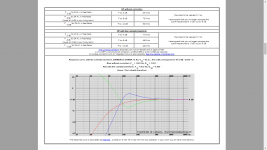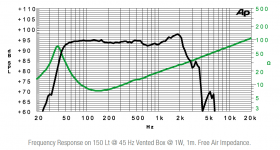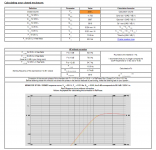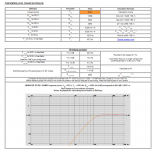To me what you say is not the case. Small rooms can utilize large speakers very well, it's just that manufacturers would have you believe that their small speakers work best, because that's what the customer wants to hear. SO they buy ever smaller speakers and get ever poorer playback quality. It's simply the market trend, ala Bose. It's wrong, but that doesn't seem to matter to people.
Everything you can improve will degrade another, in a small room, the more the speaker is deep the more it reduce your listening distance.
Therfore the wider your radiation must be in order to cover the listening aera and then the more the reflexions are an issue.
The deepness of the speaker is the one of most critical parmameter IMHO. Barely every small rooms that i've seen in my country have doors close to the corners, the "loudspeakers toed-in in the corners" solution is unapplicable.
Moreover a large and deep loudspeaker cabinet are even more large when you angle them... it is simply too big
European rooms are always much smaller than American ones. Hence things are quite different over there than they are here. But even here things vary a lot. My home in CA would be a many-million dollar one, here it's quite simple. But still I have a 20 x 14 foot dedicated listening space in a part of the house that no one else cared about.
Let me offer my perspective on this discussion.
Back in 1919 I published an AES paper using the term "waveguide" for the first time referencing an acoustic horn-like device. (For reasons that I have elaborated on at my website.) In this paper I showed how one could design a device that had the desired directivity with a minimum of internal reflections and diffraction. Following that paper, I entered into a contract with JBL, through my friend John Eargle, to develop such devices. However, shortly after that a change in status whereby my employer at the time - Ford - became contractually tied to JBL, and my association with JBL was deemed to be a conflict of interest and the contract was terminated.
My approach to this problem was also shown to be optimal by a PhD thesis in AUS that showed numerically that my curvature was in fact the ideal one to achieving a constant directivity device with minimal internal reflections.
Hence, clearly, the problem that JBL was trying to solve in their "waveguides" had already been solved, but for some reason they chose not to use it (it's not hard to see why they would want to do that.) What they came up with may work well - I have never seen accurate data on them - but I would place a bet that it does not work any better than, and probably worse, than my own approach.
Does this mean that the changes were done for "cosmetics"? Hard to say, but it does appear that they wanted something unique, rather than using something that had already been proven.
Your research has shown the effectiveness of an OS waveguide is subject to specific conditions, including the construction of the compression driver, the length/angle of its exit and termination to the waveguide.
From your research as well as observations from WHGeiger ao, apparently the shape of the wavefront - planar vs spherical - is a determining factor.
Now, if we apply OSWG (theory) to another breed of high frequency transducers, this should yield less than optimal results.
AMT (pleated diaphragm or ribbon) tweeters for instance, are unfit for use with an OSWG, as has recently been discussed in this thread.
I recall a similar discussion on the application of OSWG's with dome tweeters. More precisely
Elliptical Oblate Spheroidal™ (EOS) waveguides, originally developed for JBL® Pro LSR studio monitors.
There is no scientific support for the use of OS waveguides with dome tweeters. These are classic softdomes, different from the modified (flattenend) domes in the latest LSR 308/508. In retrospect the EOS hype seems little more than a marketing gimmick. Obviously, an OS waveguide may work very well with a dome tweeter, just as much as exponential, conical or tractrix shaped waveguides, but to my knowledge there's no scientific rationale for that application.
A few claims from JBL regarding EOS waveguides:
"The tweeter integrates with an. Elliptical Oblate Spheroidal™ (EOS) waveguide, giving it smooth integration with the midrange and a wide, consistent listening window."
"The Elliptical Oblate Spheroidal (EOS™) waveguide ensures that every seat is the best in the house for sweet music and intelligible dialogue"
"The tweeters operate using a proprietary waveguide that JBL calls the “Elliptical Oblate Spheroidal™ or EOS™ waveguide. This waveguide is intended to direct sound toward the listening area and away from the side walls for better imaging and a wider sound field. The EOS waveguide is designed to deliver the same response off-axis as it does on-axis."
And best of all:
"Proprietary JBL technology, such as PolyPlas™-reinforced woofers and titanium-laminate tweeters mounted in Elliptical Oblate Spheroidal™ (EOS™) waveguides, means your favorite music and movies sound just as the artist intended"
The "EOS technology" is from the 90's. Since then Harman has moved on to Comsol optimized waveguides.
There is a common aspect between a waveguide for a dome tweeter and a waveguide for a compression driver: an important source for interferences is - what I would non-academically describe with - the area where the driver meets the the waveguide.
But the similarities end there, because of the obvious technical differences between dome tweeters (spherical wavefronts) and compression drivers.
The "oblate" part in JBL's EOS Waveguides is definately not contributing in the same way as Dr. Geddes originally intended.
Last edited:
IMHO the multisub configuration is not a concept or a degin rule, when you are considering the room as a internals of a baffle you simply fight against the enclosure issues with better accuracy by defocusing ond the emissive device and expand your POV to its perfect integration to the environement without paying too much credit to "what you want or what you feel".
My room is the real designer of my multisub setup, it decides where i put the emissive devices and what are their technical requirements, i've chosen nothing at all.
I'm building a Geddes inspired desing apdapted to a small bedroom for a near field very low listening level purpose.
The goal is to keep the sensivity as high as possible around the multisub crossover frequency and an Eminence Delta15A2 can reach more than 97dB at 100Hz (25L-1.10Q)
Do you mean the Eminence Delta 15A, or perhaps the Gamma 15A-2?
Last edited:
European rooms are always much smaller than American ones. Hence things are quite different over there than they are here. But even here things vary a lot. My home in CA would be a many-million dollar one, here it's quite simple. But still I have a 20 x 14 foot dedicated listening space in a part of the house that no one else cared about.
It is a fact that our rooms space is diminushing in Europe, 80% of the population lives in urban areas and that number continues to grow every years.
Even moderately rich guys will face some difficulties to find a dedicated large room, they often use an empty bedroom.
Do you mean the Eminence Delta 15A, or perhaps the Gamma 15A-2?
Yes, sorry for the mistake, i mean the Gamma 15A-2.
Last edited:
My room is 484 cm and my Ford Explorer II is IIRC 478 cm..European rooms are always much smaller than American cars.
Is this something you had in mind?
The LT is the worst thing i ever tested with a closed box loudspeaker, it make every parameter worse in every area.
The closed box configuration can be good enough for me if you reduce the mecanical overshoot of the damped oscillation of membrane by filling all the internal volume with long fiber whool, the Q should lowered about 10% IMHO.
Last edited:
Not only the rooms are smaller in Europe - though, I once had a 82 x 28 ft living room in the middle of the 3th biggest city in my country (no joke) - some differences regarding (DIY) audio can be discerned:
- Focus on music vs. home cinema > very few Europeans have a dedicated Home Cinema room.
- Popularity of low power (tube) amps.
- Subsequently, the interest in high sensitivity loudspeakers.
- "Sound signature": in Europe people seem to prefer a more relaxed, less forward presentation > this might due to the smaller rooms.
The last point is tricky, but could be illustrated by the (lacking) popularity of the smaller Klipsch speakers compared to big European brands like Dali.
- Focus on music vs. home cinema > very few Europeans have a dedicated Home Cinema room.
- Popularity of low power (tube) amps.
- Subsequently, the interest in high sensitivity loudspeakers.
- "Sound signature": in Europe people seem to prefer a more relaxed, less forward presentation > this might due to the smaller rooms.
The last point is tricky, but could be illustrated by the (lacking) popularity of the smaller Klipsch speakers compared to big European brands like Dali.
Last edited:
The LT is the worst thing i ever tested with a closed box loudspeaker, it make every parameter worse in every area.
The closed box configuration can be good enough for me if you reduce the mecanical overshoot of the damped oscillation of membrane by filling all the internal volume with long fiber whool, the Q should lowered about 10% IMHO.
I am not a fan of LT either, but that Gamma 15A-2 is not designed to be used in a closed box. Moreover, it you won't give you 100dB @ 100 Hz.
Admitted, it's not the best graph ever and it's only 95,8dB, but this is a very good, well-behaved driver from a brand I know well. You could build a Geddes Summa style (BR) 2-way with this for little money. There is a build to order version available through a local dealer that's even better. Not available in the US though.
Attachments
Last edited:
I am not a fan of LT either
Why, have you used it? What do you think of this as an alternative? Sub-Woofer Controller
No, I haven't used LT. It's a personal thing, a matter of preference, but I don't see merits in the concept for my own use, even though I highly respect the works of Mr. Linkwitz.
I like a "more of less" concept.
To me: the best loudspeakers (able to transfer the emotion of music) have always been rather basic, well-thought-out designs that are "voiced to the max" > If this makes sense
That controller of Ron Elliot is a smart design and might be of interest to silversprout.
I like a "more of less" concept.
To me: the best loudspeakers (able to transfer the emotion of music) have always been rather basic, well-thought-out designs that are "voiced to the max" > If this makes sense
That controller of Ron Elliot is a smart design and might be of interest to silversprout.
Me too, therefore: overengineering is a way to go. Designs with tons "headroom" (reserves) and low demands on sources (amps) tend to sound less restraind and more natural. Related to this: avoid energy storage.
Resonances are indeed undesired, best to keep these outside of whatever bandwith/range is in order.
Resonances are indeed undesired, best to keep these outside of whatever bandwith/range is in order.
Last edited:
Your research has shown the effectiveness of an OS waveguide is subject to specific conditions, including the construction of the compression driver, the length/angle of its exit and termination to the waveguide.
From your research as well as observations from WHGeiger ao, apparently the shape of the wavefront - planar vs spherical - is a determining factor.
Now, if we apply OSWG (theory) to another breed of high frequency transducers, this should yield less than optimal results.
AMT (pleated diaphragm or ribbon) tweeters for instance, are unfit for use with an OSWG, as has recently been discussed in this thread.
I recall a similar discussion on the application of OSWG's with dome tweeters. More precisely
Elliptical Oblate Spheroidal™ (EOS) waveguides, originally developed for JBL® Pro LSR studio monitors.
There is no scientific support for the use of OS waveguides with dome tweeters. These are classic softdomes, different from the modified (flattenend) domes in the latest LSR 308/508. In retrospect the EOS hype seems little more than a marketing gimmick. Obviously, an OS waveguide may work very well with a dome tweeter, just as much as exponential, conical or tractrix shaped waveguides, but to my knowledge there's no scientific rationale for that application.
A few claims from JBL regarding EOS waveguides:
"The tweeter integrates with an. Elliptical Oblate Spheroidal™ (EOS) waveguide, giving it smooth integration with the midrange and a wide, consistent listening window."
"The Elliptical Oblate Spheroidal (EOS™) waveguide ensures that every seat is the best in the house for sweet music and intelligible dialogue"
"The tweeters operate using a proprietary waveguide that JBL calls the “Elliptical Oblate Spheroidal™ or EOS™ waveguide. This waveguide is intended to direct sound toward the listening area and away from the side walls for better imaging and a wider sound field. The EOS waveguide is designed to deliver the same response off-axis as it does on-axis."
And best of all:
"Proprietary JBL technology, such as PolyPlas™-reinforced woofers and titanium-laminate tweeters mounted in Elliptical Oblate Spheroidal™ (EOS™) waveguides, means your favorite music and movies sound just as the artist intended"
The "EOS technology" is from the 90's. Since then Harman has moved on to Comsol optimized waveguides.
There is a common aspect between a waveguide for a dome tweeter and a waveguide for a compression driver: an important source for interferences is - what I would non-academically describe with - the area where the driver meets the the waveguide.
But the similarities end there, because of the obvious technical differences between dome tweeters (spherical wavefronts) and compression drivers.
The "oblate" part in JBL's EOS Waveguides is definately not contributing in the same way as Dr. Geddes originally intended.
Your response demonstrates a profound lack of understanding of my work. To wit, your first sentence is completely wrong, an OSWG can be adapted to any size, any angle or any length of a compression driver, its just a matter of selecting the right parameter values.
I fail to understand what Bill Gheiger has to do with any of this, but the fact is that compression drivers are intended to present a flat wave-front at their exit which is exactly what an OSWG wants to see. That they don't always do that is a failing of theirs, not of mine.
Another aspect that you fail to recognize is that my Waveguide theory was not about an OSWG, it was about a new way of analysis and design (one that does not show internal reflections and has a minimum of diffraction) that was more accurate than the prevailing one found in horn theory. As shown in my papers and my book, this analysis can be applied to any source type or shape. In my first paper I used the OS as an example of how this is done since it was so obviously ideal for use with a compression driver - my personal interest at the time. But the theory can be applied to virtually any source, such as an AMT - assuming, of course, that one actually understands the theory.
"There is no scientific support for the use of OS waveguides with dome tweeters." - this isn't true either. The fact that soft domes are not as ideally suited to an OSWG, as they are to compression drivers, does not preclude the possibility that OSWG might still be an optimal choice. (This is how, I am told, Genelec designed their waveguides - they used an OS contour stright out of my papers.)
As to the discussion about EOS, I find it naive for someone to take a manufacturers marketing claims at face value and to use them as evidence in a discussion. AT any rate my discussion above was about the M2 not the EOS, but I am happy to discuss them as well.
It can't be lost on you that the term EOS Waveguides smacks of similarity to OS Waveguides, a term that was becoming popular at the time (The term OS preceded EOS by many years.) Stretching an OS curve to be elliptical is not brain surgery. I have build waveguides like this myself. I never manufactured any like this because I did not find the cost/benefit ratio to be attractive. But of course to a marketing guy "Elliptical Oblate Spheroidal" just sounds a little cooler than just "Oblate Spheroidal."
By the way "dome tweeters (spherical wavefronts)" is also incorrect, as the wavefront from a dome is not truly spherical because the dome moves axially not radially as you imply.
I think that you would make a better arguments if you got your facts straight.
Finally, numerical techniques like FEA and BEM are great for analyzing a specific situation, (This is what I have, how will it perform?,) but they cannot do the inverse problem, (i.e this is the performance that I want, what should the design be?) My research was on the later not on the former.
D'ont want to have a 3D sound with a 2D image.Not only the rooms are smaller in Europe - though, I once had a 82 x 28 ft living room in the middle of the 3th biggest city in my country (no joke) - some differences regarding (DIY) audio can be discerned:
- Focus on music vs. home cinema > very few Europeans have a dedicated Home Cinema room.
Tubes are eye catchers, and a part of our history, we still today have a lot of old tube equipped appliances in our barns and it link us to our parents story.- Popularity of low power (tube) amps.
Same as the previous question, we barely all had heard one time in our life high efficiency wideband transducers.- Subsequently, the interest in high sensitivity loudspeakers.
I still have a old philips all intergated mono turntable that operate on batteries and is equipped with a 25cm high efficiency wide band in an open baffle, everyone that have heard that low fi system seems agree, it is excellent sounding device (and all the components are geniune, no maintenance at all, still operate perfectly)
There is a trap here, the directivity AND the placement of the speakers have an huge impact on imaging.- "Sound signature": in Europe people seem to prefer a more relaxed, less forward presentation > this might due to the smaller rooms.
Admitted, it's not the best graph ever and it's only 95,8dB, but this is a very good, well-behaved driver from a brand I know well. You could build a Geddes Summa style (BR) 2-way with this for little money. There is a build to order version available through a local dealer that's even better. Not available in the US though.
The 25 liters stuffed closed box solution with an Q around 1.07 will have an efficiency around 94dB at 100Hz.
My final choice with a 12' in 25L gives me around 92-93dB at 100Hz, if you have a solution for going higher in 25L...
Last edited:
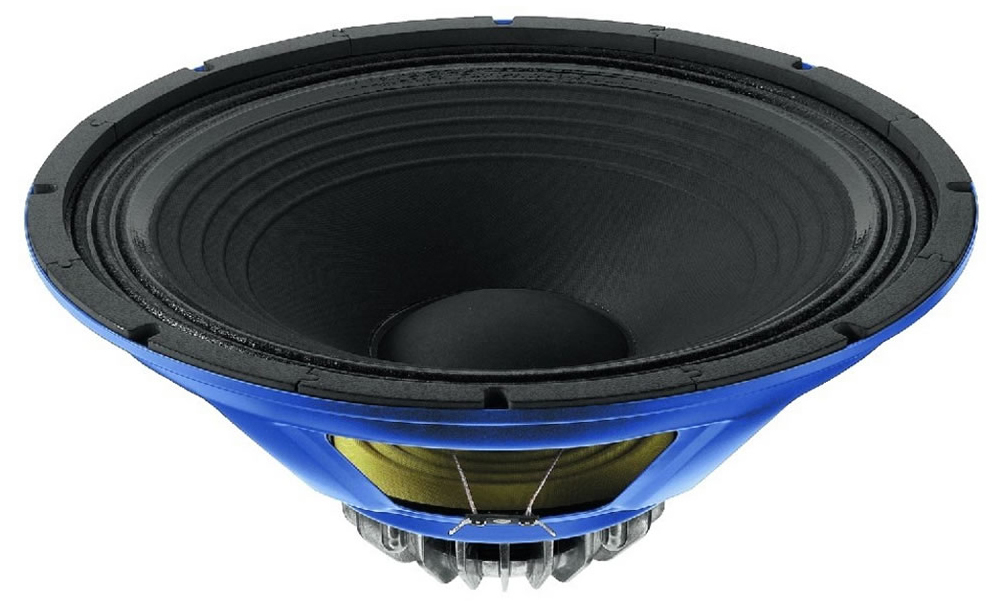
This one, it's expensive for a pressed steel chassis, largely due to the neo magnet. The Germans love it.
It's not optimal, but at least close to your target of 100dB.
Here's the driver in a 25L and a 30L CB:
Attachments
Last edited:
- Home
- Loudspeakers
- Multi-Way
- How to Make a New Wave Biradial Horn
